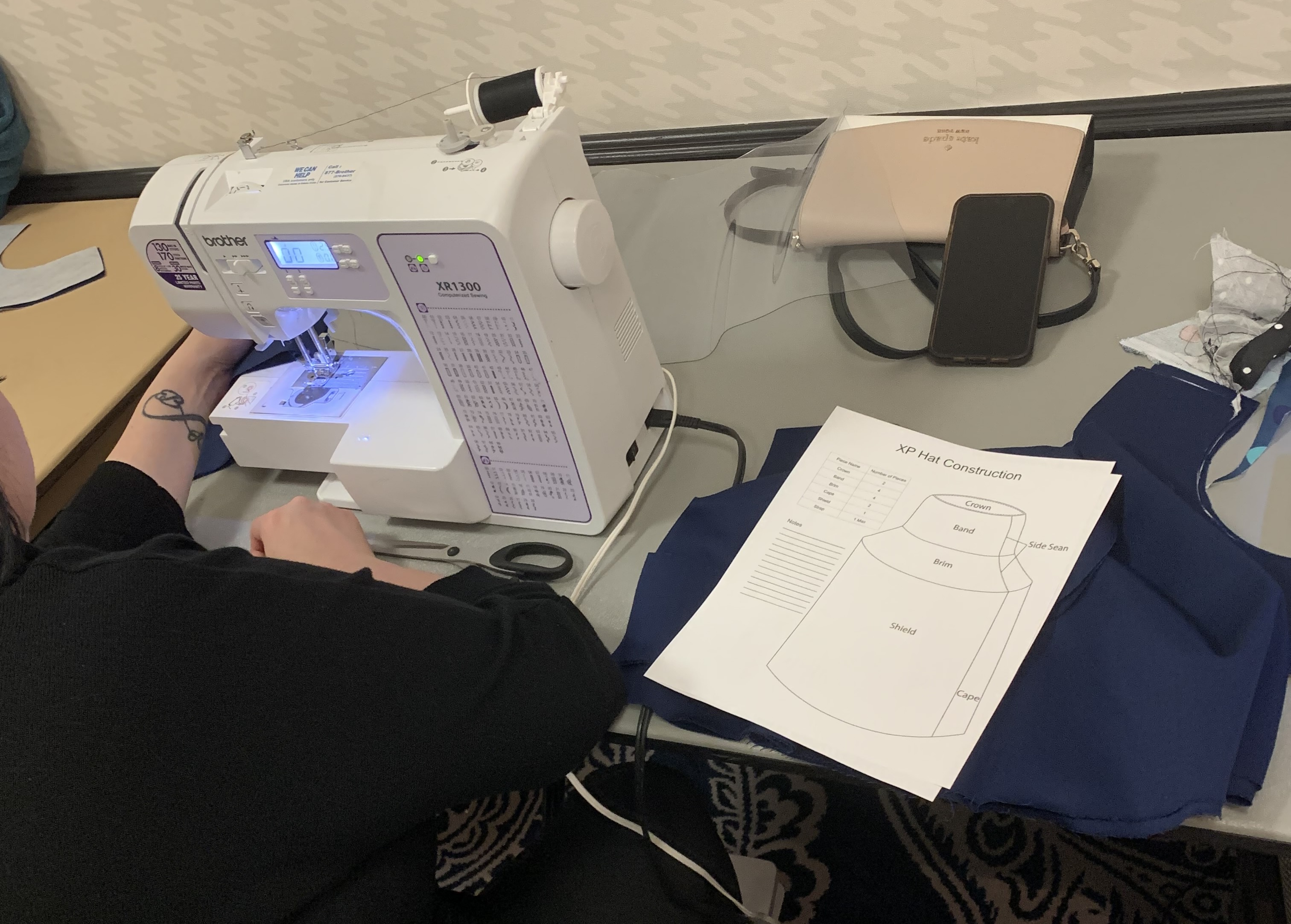For many people, appearance or comfort is the most important consideration when choosing a hat to wear. But for people living with Xeroderma Pigmentosum (XP), an inherited disease that causes an individual to be extremely sensitive to ultraviolet radiation, health and safety must take precedence. As part of her ongoing efforts to raise awareness and support for individuals with XP, Dr. Laura Niedernhofer (College of Biological Sciences) partnered with Professor Lucy Dunne’s (Apparel Design) technical design studio to help design a better hat option for people living with XP.

Founder of the Niedernhofer Lab, part of the Medical Discovery Team on the Biology of Aging, and the Director of the Institute on the Biology of Aging and Metabolism, Niedernhofer researches the impact of DNA damage on the structure of DNA, cell function, and organism health. Through this work, she has been in close contact with the XP Family Support Group (XPFSG).
“While I was doing my Ph.D. I appreciated that I was using cells from children with XP as a way to study DNA damage. The minute I started my own lab, I was determined to have everyone working in this lab really understand the impetus for our research and to give back to the individuals who have made this research possible,” explained Niedernhofer.
After arriving at the U of M in 2018, Niedernhofer was excited to learn about the College of Design. Because of the limited demand for protective clothing designed for people with XP, there aren’t options available for purchase. Partnering with the college seemed like the perfect opportunity to connect with experts to help with her work related to XP.
“Too often people think of apparel design as a subject solely focused on aesthetics. But apparel designers work on so much more. In this case, we’re engineering a “portable environment” that’s allowing an individual to live safely in an environment that’s toxic to them,” said Dunne.
This past fall, apparel design students in Dunne’s technical design studio built on initial designs created by individuals with XP and their family members. “Two women who work with XPFSG came in to speak to our class and we were able to ask them questions about XP and the hat requirements. One of them showed us a small machine that measures the amount of UV light that gets through the material,” said Jaden Evenson (Apparel Design).
“The common features of all the examples we got from families were a bucket hat style with an attached cape and visor,” explained Isabel Friedell (Apparel Design). After speaking with members of XPFSG, students in the class broke into teams to form mini assembly lines and began to create the newly designed hats. Each student worked on many different parts of the project, which helped refine their skills and gain experience with assembly line production. “Setting quality and construction standards was actually quite difficult,” reflected Friedell.
“There needed to be two layers of fabric to ensure that the sun would not get through the little holes in the fabric. We also had to consider stitching length, because each time the needle pierces the fabric, it makes a small hole,” added Evenson.
By the end of the project, apparel design students completed 35 hats for XPFSG. Students also attended the Minneapolis XP Conference in November 2022 where they hosted a workshop to share the hat design and show attendees how to make their own. This spring, Professor Dunne’s functional design class will continue the project with a new design iteration that protects from UV while also allowing sounds to pass through easily.
Photos courtesy of Jaden Evenson.
In the fight against cancer, little things can make a huge difference. Cancer Care Foundation MN teamed up with Professor Lucy Dunne’s design class to redesign onesies for infants receiving cancer treatment at Children’s Minnesota. The result? A onesie with pockets for easy access to treatment ports, a small change that has made a big difference in care.
The fields of medical device and apparel design may not seem to have a lot in common, but alumni from the College of Design are changing that.
What started as a class project for Ian Harris, Warda Moosa, and Mary Xiong (all Apparel Design) turned into the prize-winning entry at the Industrial Fabrics Association International (IFAI) Advanced Textiles Student Design Competition. Together the three seniors (then juniors) created an emergency avalanche transceiver garment that took first place in this national competition.





